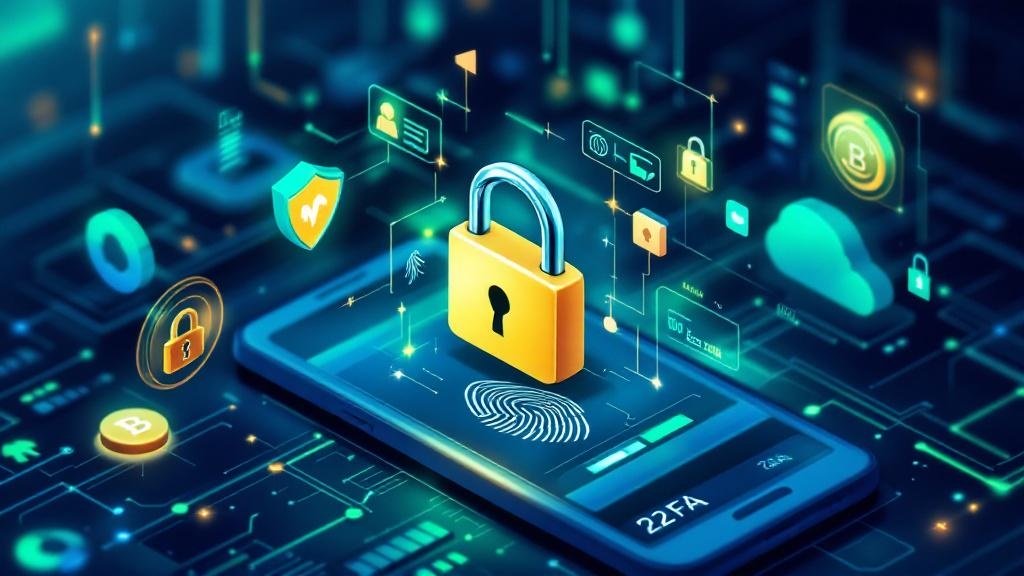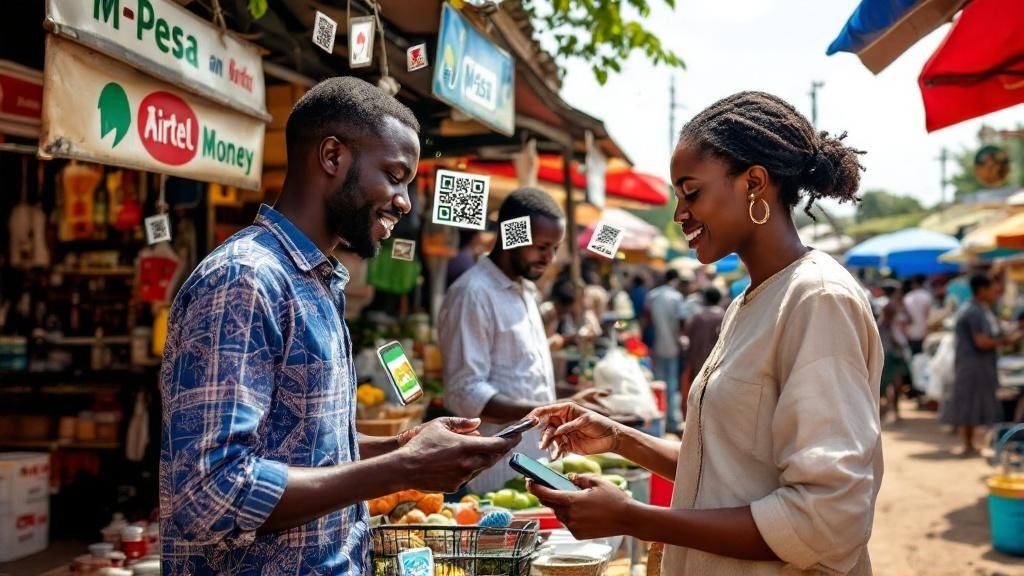In an era where mobile payments and digital wallets have become an integral part of our daily lives, ensuring the security of these wallets is paramount. With millions of transactions happening daily, the importance of robust digital wallet authentication methods cannot be overstated. Whether you’re making a quick payment at the store or transferring funds globally, the methods used to verify your identity play a critical role in safeguarding your financial data.
This blog post explores the different digital wallet authentication methods, their importance, and how they can ensure a secure and seamless experience for users. We’ll also dive into real-life examples, advanced security features, and how you can optimize digital wallet security for everyday transactions.
Why Digital Wallet Authentication is Critical
Digital wallets store everything from credit card information to personal identification details, and these wallets are often linked to multiple payment systems. Without proper authentication, a malicious actor could easily access sensitive information and make unauthorized transactions. That’s why secure digital wallet login and authentication protocols are crucial for protecting user data.
Authentication is essentially the process of confirming that the user accessing the wallet is indeed the legitimate owner. By employing strong verification methods, digital wallets can prevent fraud, identity theft, and other security breaches.
In this section, we’ll explore the most commonly used digital wallet authentication methods, each with its own set of advantages and limitations.
1. Multi-Factor Authentication for Digital Wallets
Multi-factor authentication (MFA) is one of the most effective ways to enhance the security of digital wallets. Instead of relying on a single password or PIN, MFA requires users to provide two or more verification factors before granting access. This typically involves something you know (e.g., a password), something you have (e.g., a mobile device), or something you are (e.g., biometric data).
How Does MFA Work?
When you attempt to log into your digital wallet, you will first enter your password. Then, depending on the wallet’s settings, you may receive an SMS with a code, use an authentication app, or be prompted for a biometric scan. The combination of multiple layers makes it significantly harder for unauthorized users to gain access.
Example of MFA in Action:
Scenario: You log into your digital wallet app, and after entering your password, you receive a one-time passcode (OTP) via text. Entering this OTP successfully grants you access.
Benefit: Even if someone steals your password, they won’t be able to access your wallet without the second factor.
2. Two-Factor Authentication (2FA) Digital Wallet
While two-factor authentication (2FA) is a subset of MFA, it is worth mentioning as a specific, widely adopted authentication method for digital wallets. In the case of 2FA, the second factor is usually a unique code sent to your mobile device or generated by an app like Google Authenticator.
2FA vs. MFA: What’s the Difference?
2FA: Typically involves two factors — one you know (a password) and one you have (an OTP sent to your phone).
MFA: Involves two or more factors, and may include biometric verification or hardware tokens in addition to the first two.
2FA is an excellent choice for protecting digital wallet security because it significantly reduces the risk of unauthorized access, even if someone knows your password.
Real-Life Example:
Scenario: You try to access your digital wallet app. You enter your password, and within seconds, a code pops up on your phone. You input this code, and only then are you granted access to your account.
3. Biometric Authentication in Digital Wallets
Biometric authentication has rapidly gained traction as a secure and user-friendly method for verifying identity. Whether it’s through fingerprint recognition, face ID, or even voice recognition, biometrics are quickly becoming the standard for secure digital wallet login.
How Does Biometric Authentication Work?
Biometric authentication uses unique biological characteristics to verify your identity. For example, when logging into your wallet, the system might prompt you to scan your fingerprint or face. The wallet software then compares the scan with the stored biometric data to confirm your identity.
Real-Life Example:
Scenario: Instead of entering a password, you simply scan your fingerprint or use Face ID to access your wallet. The process is quick, seamless, and, most importantly, secure.
Advantages of Biometrics:
Convenience: No need to remember complex passwords.
Security: Biometric data is difficult to replicate, making it a highly secure method.
4. Digital Wallet Verification Process Using Blockchain Technology
Blockchain technology is not only revolutionizing cryptocurrency but also plays a crucial role in the digital wallet verification process. By leveraging blockchain, wallets can offer enhanced security features like decentralized authentication, reducing the risks of centralized attacks.
How Blockchain Authentication Works
In blockchain-based wallets, the user’s identity is stored in a decentralized ledger, and the system uses encryption to verify the identity of users without exposing sensitive data. Blockchain also enables transparency and traceability of all transactions, adding another layer of security to digital wallets.
Example in Action:
Scenario: When you make a payment, the wallet’s blockchain network authenticates your identity without requiring a password or PIN. The decentralized nature of the technology ensures that your data is not stored in one centralized location, reducing the risk of hacks.
5. Authentication Protocols for Digital Wallets
Many digital wallets rely on established authentication protocols that ensure the security of transactions and data storage. These protocols follow best practices set by industry standards and include technologies like SSL encryption, OAuth, and TLS.
Common Authentication Protocols:
SSL/TLS Encryption: Secures the data exchange between the wallet app and its server by encrypting communication.
OAuth: A secure authorization framework used by many fintech apps, allowing users to grant access without sharing their passwords.
These protocols ensure that users’ personal and payment data is protected during the authentication process.
6. Risk-Based Authentication for Digital Payments
Risk-based authentication is another evolving technique, particularly useful for digital wallet fraud prevention. This method assesses the risk of a transaction and adjusts the authentication requirements accordingly. If a transaction appears suspicious, additional verification steps may be required.
How It Works:
Scenario: You attempt to transfer a large sum of money to a new recipient. Based on the transaction amount, the system might request additional verification (e.g., OTP, fingerprint scan) to ensure that it’s you making the transaction.
Benefits:
Adaptive Security: Adjusts authentication strength based on transaction risk.
User Convenience: Lower risk transactions won’t require extra steps, providing a smooth user experience.
7. Payment Gateway Security Measures
Digital wallets often work alongside third-party payment gateways for processing transactions. Ensuring that these gateways follow rigorous security protocols is essential for securing digital wallet transactions.
Key Security Measures for Payment Gateways:
Encryption: Protects sensitive transaction data from being intercepted during transfer.
Tokenization: Converts sensitive data into non-sensitive equivalents, reducing the risk of fraud.
FAQs About Digital Wallet Authentication
1. What is the best authentication method for digital wallets?
The best authentication method depends on your needs. Biometric authentication offers convenience, while multi-factor authentication (MFA) provides higher security. Combining both is ideal for most users.
2. Is digital wallet authentication safe?
Yes, digital wallet authentication methods like 2FA and biometric verification provide a high level of security. However, it’s essential to ensure your wallet app uses up-to-date security protocols.
3. How does blockchain improve wallet security?
Blockchain enhances wallet security by decentralizing data storage, making it less vulnerable to hacks. It also provides an immutable ledger, ensuring the transparency of transactions.
4. What is risk-based authentication in digital wallets?
Risk-based authentication adjusts the level of verification required based on the perceived risk of a transaction. High-risk activities trigger additional verification steps, while low-risk transactions are processed faster.
5. Can two-factor authentication be bypassed?
While 2FA is highly secure, it’s still possible for hackers to bypass it with social engineering techniques. Always stay vigilant and ensure your phone and accounts are secured.
6. What role does mobile security play in digital wallet authentication?
Mobile security is crucial because most digital wallets are accessed through mobile devices. Ensure your phone is secured with a strong password and encryption to protect your wallet data.
7. How do I set up multi-factor authentication for my digital wallet?
Most wallets have an option in the settings to enable MFA. Typically, you’ll need to link your phone number or authentication app to receive the second verification code during login.
Conclusion
When it comes to digital wallet authentication, security features are more important than ever. By implementing multiple layers of protection such as multi-factor authentication, biometric verification, and blockchain technology, you can significantly reduce the risk of fraud and ensure your personal and financial information stays safe.
Remember, the key to safe digital transactions lies in understanding the various authentication methods available and choosing the right mix of security features for your needs. Stay ahead of threats by continually adapting to new technologies and keeping your wallets secured with the best practices in digital wallet security.








Comments (0)